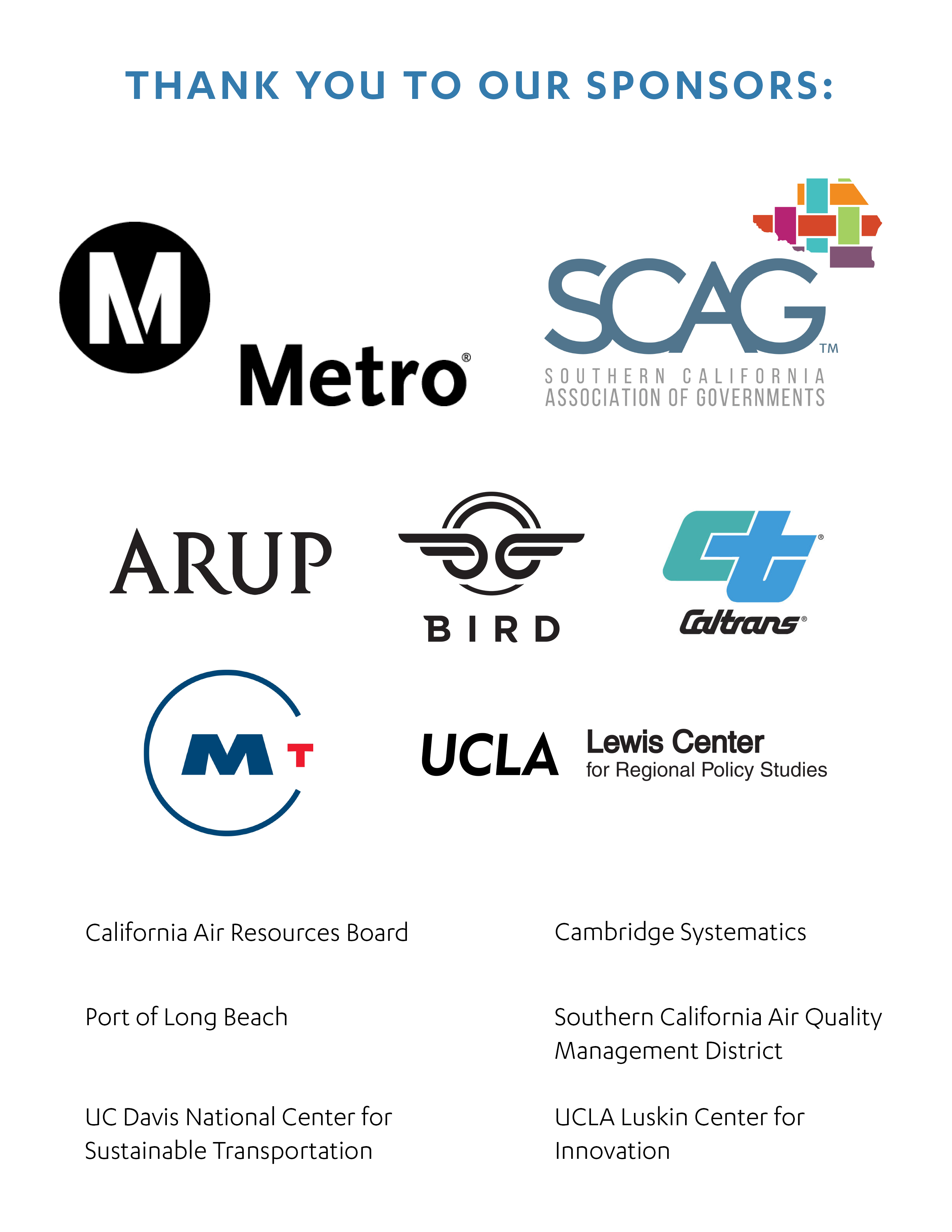2018 Sponsors

Program
From Public Transit to Public Mobility
As reflected in its title, From Public Transit to Public Mobility, this year’s Symposium has an overarching theme of transition: from what’s happening in urban mobility amidst an inundation of new options, to how public agencies are adapting to accommodate, manage, and incorporate, and compete with new options while continuing to serve the public interest.
To foster a strategy for public transit agencies and city transportation departments to thrive amidst current disruptions, it’s necessary to first develop a first principles understanding of both the differences between the public and private sectors, and an individual’s reasons for and decisions about traveling.
Public vs. Private
Startup companies measure funding in months. Time is money. And progress is fast, if uncertain. In the six months of a public sector procurement cycle, a startup company might have two rounds of new funding — or cease to be a going concern. “Hype” can boost a company’s valuation in the short-term.
While venture capital is impatient and risk-taking, public capital is patient and risk-averse. Whereas startups’ primary goal is to scale, sell, or be profitable as quickly as possible, public agencies’ mission is to meet service standards determined by elected officials and the public. This means public agencies alone can focus on the long-term public interest over profit.
Regardless of how private mobility services and products develop, the public sector will have an inexorable role in infrastructure management, planning, and funding. With this permanence, the public sector can adapt infrastructure to meet changing needs.
Progressive incrementalism
Use of appropriate, privately-developed technology and profound cooperation between public sector entities to improve the user experience serves as a foundation for advancing the public interest through mobility. By adopting the type of user-design approach that has fueled private mobility’s growth, public agencies can better understand travel behavior, especially for those who fall through the cracks: disabled people, families with children, minors prohibited from using new mobility services, and even misbehaving users banned from private mobility services.
About the Symposium

Since 1991, the UCLA Lake Arrowhead Symposium has tackled the connections between transportation, land use, and the environment. Arrowhead’s diverse and influential group of policymakers, private sector stakeholders, public sector analysts, consultants, advocates, and researchers dive into these pressing policy issues every day. Here we’ve collected some of their insights from the Symposium, as well as information on their ongoing work and updates on upcoming events. Learn more about the symposium’s history.
